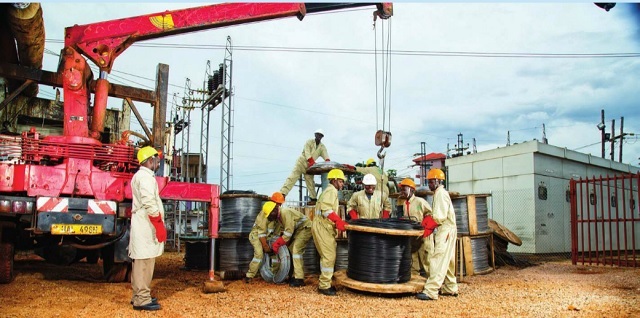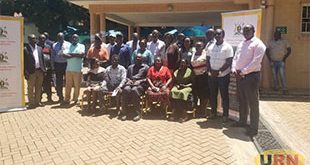
Kampala, Uganda | THE INDEPENDENT | The modification of the Operation License of Umeme by Electricity Regulatory Authority (ERA) has left company officials non-committal to quality and reliable electricity supply in coming years.
The modified license which came into effect last Friday set new investment and performance parameters for Umeme. The regulator slashed operation, distribution and maintenance costs that Umeme had applied for, to guarantee effective and efficient service delivery.
Umeme had requested for USD 31.1 million (116 billion Shillings) as staff costs for 2019, but only USD 18.0 million (67 billion Shillings) was approved by ERA. Umeme asked for USD 33.6 million (125 billion Shillings) for 2020 and USD 36.3 million (124 billion Shillings) for 2021 but ERA approved USD 19.2 million (72 billion) for 2020 and USD 20.5 million (76 billion Shillings) for 2021 respectively.
Umeme requested for other costs worth USD 3.6 million (13 billion Shillings) for 2019, USD 3.8 million (14 billion Shillings) for 2020 and USD 3.9 million (14.5 billion Shillings) for 2021. However, ERA approved USD 2.2 million (8 billion Shillings), USD 2.4 million (9 billion Shillings), and USD 2.6 million (10 billion Shillings) respectively.
Umeme asked for transport costs of USD 4.7 million (18 billion Shillings) for 2019, USD 5.2 million (19 billion Shillings) for 2020 and USD 5.3 million (20 billion Shillings) for 2021. However, USD 3.9 million (15 billion Shillings) USD 4.2 million (16 billion Shillings) and USD 4.6 million (17 billion Shillings) was approved by ERA.
ERA almost halved the operational costs that Umeme had requested for. Umeme requested for operational costs of USD 15.4 million (57 billion Shillings) for 2019 but ERA approved USD 8.0 million (29.8 billion Shillings), USD 16.1 million (60 billion Shillings) for 2020 but ERA approved and USD 8.2 million (30 billion Shillings), and USD 16.9 million (63 billion Shillings) for 2021 but ERA approved USD 8.4 million (31 billion Shillings).
Umeme officials have been muttering in disapproval of the reduced funding saying that the compny can’t deliver under such tight budget limits. The implications of the new parameters, they say are poor service delivery.
“We expect that several of our new service centres will be closed or proposed new ones won’t be opened, the government electricity connections policy will be hard hit, there will be poor supply service and investor confidence in the sector might drop,” a source at Umeme told URN on condition of anonymity.
As government commissions new mega power dams, Umeme officials say they need funds to have footprints across the country, but ERA is slashing down their budget.
President Museveni commissioned the 183MW Isimba Power Dam last month. The commissioning of Karuma Dam with 600 Megawatts by the end of this year will push Uganda’s generation capacity of 1,767MW.
“This will mean you need a robust and well-maintained network to absorb and effectively distribute this power. Network evacuation pipes and lines to the demand growth areas will require massive investments,” a source noted.
Umeme officials argue that the network expansion offers new job opening. But slashed budgets mean that they will instead restructure and cut down staff. “The country will need to triple its current number of technical staff to serve the double the size to serve 3.4 million customers by 2025,” officials say.
The company requested USD 3.9 million Shillings (14.5 billion Shillings) for technical losses reduction and reliability improvement for 2019, USD 4.0 million (14.9 billion Shillings) for 2020 and 4.1 million (15.2 billion Shillings) for 2021. However, ERA approved only USD 1.66 million (6.1 billion Shillings), 1.67 million (6.2 billion Shillings) and USD 0.58 million (2.1 billion Shillings) respectively. Umeme wonders why and how with such paltry funding, ERA expects them to reduce energy losses by 3 per cent in 2019.
“There are many questions on the losses target; is it attainable? Is it humanly possible with staff numbers and costs cut? What tricks will you deploy given that you have never reduced losses by 3 percentage points in one calendar year before? How will you achieve this when the costs have been cut by 40 per cent?” the company officials say.
Umeme managing director, Selestino Babungi and media manager Stephen Illungole were unavailable for an official comment. They were reportedly held up in a series of meetings.
But Babungi had explained earlier that they need funds to invest in the network and have foot soldiers on across ground. He further argued that the government should not underprice power tariffs just because of excess supply.
ERA Chief Executive Officer, Eng. Ziria Tibalwa Zaako says the reduction of Umeme’s investment is explained by investments made in the last years. For instance, due to the introduction of prepaid metering, there is no longer need for Umeme staffs to read meters or collect bills.
Tibalwa also argues that more than USD 500 million (1.8 trillion Shillings) has been invested in the distribution network in recent years. The network, she says it much better.
Tibalwa insists funds approved in the new parameters are sufficient for Umeme to operate effectively.
******
URN
 The Independent Uganda: You get the Truth we Pay the Price
The Independent Uganda: You get the Truth we Pay the Price



